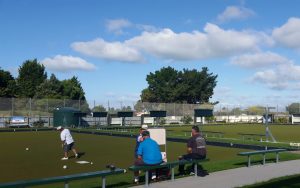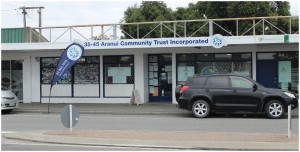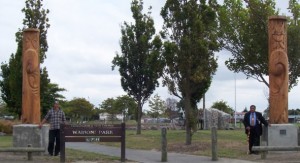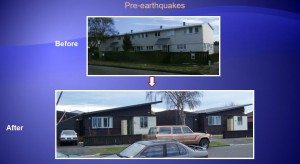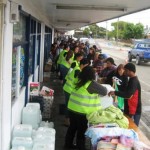Kidshub: Looking after our tamariki, whānau and community the CLD way.
Over the last two years the Christchurch Methodist Mission (CMM) Community Development team have worked alongside a group of whānau who are passionate about providing experiences and opportunities for their community. Together they have created the ‘Kidshub’ initiative in Linwood, Christchurch.
The Kidshub committee is now made up of 5 whānau leads and committed to providing low cost or no cost activities for whānau in the Linwood area. Building on the seed of an idea sown at a parents’ hui about five years ago, they have been busy organising community meetings and community events for their whānau, tamariki and the wider community.
With support from a CMM Development worker, a family worker from the Linwood Community Corner Trust, a Christchurch City Council advisor and Kim from the STEAM collective, the committee has organised a range of activities for the community during the school holidays. These activities all promote brain development and team building: they include art and craft, high tech days, maths exercises (using dragon cards in order to complete mathematical tasks in a fun way), engineering exercises, as well as bus trips to Victoria Park, Willow Bank and Spencer Park. Moreover, the committee also organised several community events throughout the year such as a kids market, Quiz night, neighbourhood BBQ, pizza nights and a light dance.
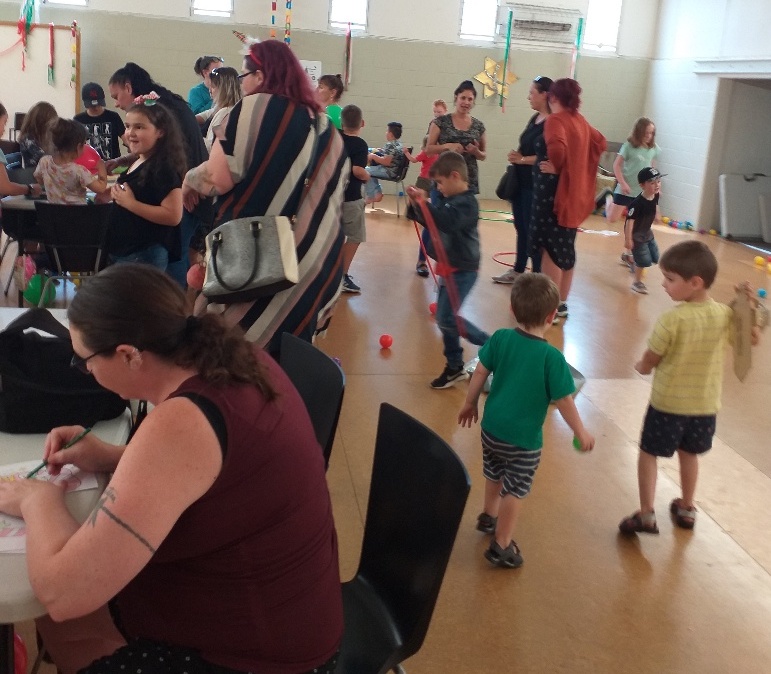
Fun for everyone at the Kidshub Activity Day 2019.
In February 2020, whānau and tamariki presented Kidshub to the Linwood Community Board, sharing their vision and goals: to give the tamariki the kind of experiences that they have been dreaming of, experiences that they wouldn’t normally have access to, and to enable whānau to share these experiences with their tamariki. The Kidshub committee envisions these experiences to come at little to no cost for whānau to ensure that tamariki have the highest possible likelihood of being able to participate.
Kidshub is all about fostering community connections in a neutral environment. A place to nurture whānau connections and to create a sense of belonging and bonding, with shared interactions and new experiences in a safe space for whānau to enjoy time together.
“We value the whānau being present at Kidshub so that these memories can be experienced and reminisced about together.”
Abbi, Kidshub parent leader
Key community-led learning from Kidshub:
In talking with the committee whānau about why they enjoy the Kidshub, they speak about the relationships they been able to build with the people whom they have met, and about having grown in confidence. The hope is that this will filter through to their tamariki to grow more confident and eventually become leaders in their local community. Kidshub is nurturing this growth and providing opportunities for leaders to grow.
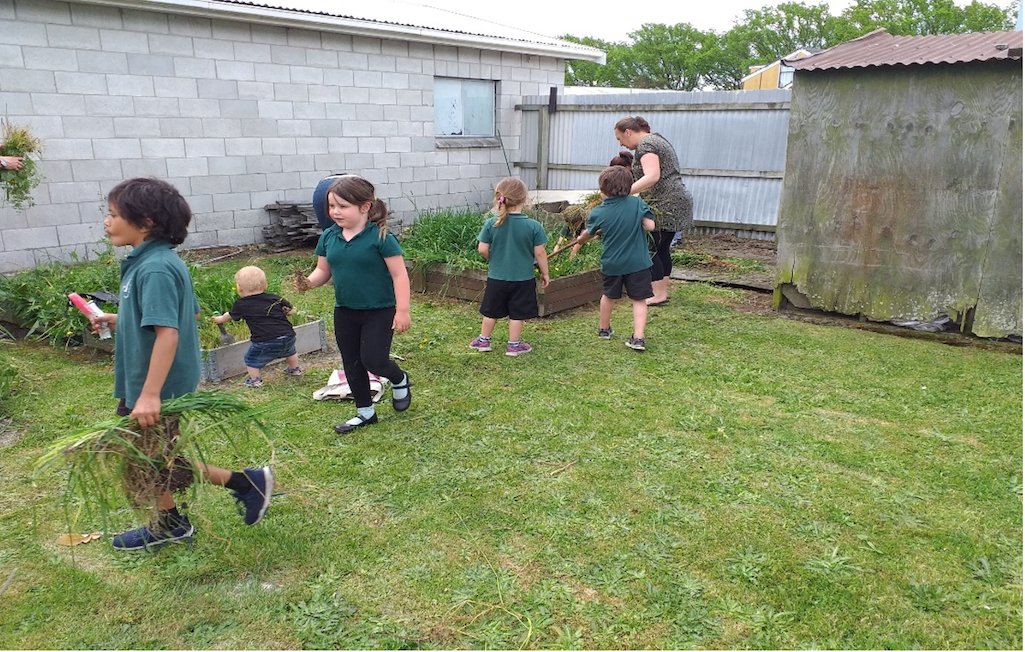
Gardening is a great way to learn for the tamariki.
The success of the Kidshub initiative points to the role that the following key principles of community-led development play in community projects:
The importance of place and a sense of belonging
There is a long term commitment to the mahi because the whānau feel a strong sense of connection to, and ownership of the places and spaces occupied. Working in collaboration with the neighbourhood and making sure everyone felt safe and respected, the committee cleaned up the section, removed rubbish, and turned it into a space that was safe and safe for everyone to enjoy.

Belonging, community and play are represented in the Kidshub logo.
Taking the time to listen and understand local voices
“We listened, opened up possibilities, we took our time because we didn’t know what would happen.”
Anne Gibling, CMM Community Development Worker
The committee dedicated a lot of time to building trusting relationships with the whanau in their community, and involved them in every step of the process, starting from scratch and finding resources needed to create a space where everyone felt heard, understood and had their needs met. It is from the shared experience and active listening and engagement that trust, respect and relationships can grow.
“The way we talk about others is important in shaping how we connect.”
Anne Gibling
Local leadership and learning by doing
The driving power behind Kidshub was the leadership of the four key women and their wishes for their children. Putting these ideas into action and reaching out for support where they needed it enabled them to build relationships with people in the wider community, even with those whom they never imagined they would be able to connect with. They were able to build trust through making the commitment to show up, listen and act on what they promised. Growing and learning along the way, there is not set-in-stone agenda, the whānau are shaping next steps as they go along – together with their community.
For more information on the Kidshub initiative, please email Anne Gibling, Christchurch Methodist Mission.
A positive Christchurch community story
Riccarton West used to be a place where “people didn’t meet people… there wasn’t a sense of belonging”, according to one local. After a series of community-led projects in the area, crime stats are down, residents are more connected and people are caring for the environment and the community. Take a look at their awesome video below and if you’d like more information about this initiative, check out Oak Development Trust’s website. Riccarton West Community Documentary from Dan Watson on Vimeo. It’s also been reposted on our YouTube channel here.
The Pūkeko Centre: A shared vision in East Christchurch
The Parklands community in East Christchurch was badly affected by the 2011 earthquakes. This is a story of how two unlikely collaborators came together to create something new for the whole community, using a community-led approach.
After the February 2011 earthquakes, both Parklands Bowling Club and Parklands Rugby Roosters club found themselves without a home. The bowling club’s greens had been ripped apart by the quakes and badly damaged by liquefaction and their pavilion was in a state beyond repair. At the same time, Parklands Roosters Rugby club changed overnight from a sports club to a “welfare club” according to the former Chair, Maurice Lawlor. The club sprang into action to support its members, who were devastated by the quakes. The earthquakes had also caused damage to the Roosters’ base and so, they were looking for a new home as well. Together, the two organisations came up with the idea of creating a new centre that both clubs could use, which could also be opened up to the wider community. This marked the start of a wonderful collaboration by the two clubs to build not only a new clubroom, but a new community centre.
Many people, groups and sectors working together
The process started with a lot of community consultation and some support from other organisations. Lawlor, now the Chair of the Pūkeko Centre Committee, says that Christchurch City Council and the local residents’ association helped the newly formed committee to identify community groups in the area who might be interested in using a new community facility and from this, networking groups were formed, made up of interested individuals, organisations and local businesses. The committee also engaged with the Burwood-Pegasus Community Board on a regular basis and have had a lot of support from Sport Canterbury. Lawlor added that they also had a trade show to which they invited all the community groups. This was an opportunity to “talk about what their needs were and to share our vision”, he says. Lawlor explains that the committee ran an independent capability study which included consulting a wide range of groups. They also engaged an external consultant, who came in to facilitate community discussions around what was needed. The community had input into the name of the centre as well. It was chosen due to the fact that female pūkeko all lay their eggs in the same nest and the eggs and chicks are then nurtured by the whole community.
Using existing strengths and assets
Building a new clubroom was going to be too expensive, so they needed to think outside the square. This resulted in two buildings at the local, closed Freeville School being identified as suitable for the project. They had previously been destined for demolition, but were then gifted to the committee by the Ministry of Education. The buildings were relocated onto the bowling club site, a new foundation was added and a compete refit carried out to turn the building into a modern multi-purpose pavilion. These are now being redeveloped into a multi-sports, recreation and community centre.
Shared local visions drive action and change
The vision was always that the centre would be more than a sports club. Lawlor says that “other groups needed a space. People needed connectivity”. He explains that the idea is that the Pūkeko centre will give community groups a home, allow them to connect, leverage off each other, reduce duplication and grow their own projects. There are a number of groups who are already using the centre and many more that want to set themselves up as regular users, such as Girl Guides, Brownies and health and fitness and senior card groups, plus a number of support networks. Parkview Primary School is located right next door and its Principal, Simon Thomas, says that the clubrooms are currently being used for socialising by the teachers and, in the not-too-distant future, school assemblies will be held at the centre once the hall is built. Parkview doesn’t currently have a big enough space for whole school assemblies, community presentations or other large school gatherings. It may be 5 – 10 years before they can afford to build their own hall so, in the meantime, they are happy to have this arrangement with the Pūkeko Centre. In addition to this, there is an agreement with Sports Canterbury which will allow the school children to start learning to bowl at the club in future. Thomas values the Pūkeko centre as it’s “community driven, has the same vision as the school and there is a great relationship and great community desire” for such a space.
After a lot of hard work, fund raising and help from sponsors, philanthropists, funding bodies and private donors, Stage 1 was completed and was opened by the Mayor of Christchurch, Lianne Dalziel, on 24th February 2018. The clubroom building features a bar, a kitchen, meeting spaces and a free community library corner with comfy couches. The space has lots of natural light and a welcoming feel. Funds still need to be raised for Stage Two, which will result in the opening of the hall (hopefully at the end of this year); Stage Three, which will see a breezeway built and the car parking area finished; and Stage Four, which completes the project with the final landscaping and outdoor court construction.
What will success look like?
The Pūkeko Centre has already achieved a lot, but they have still have so much they want to accomplish for their community. Wayne Eden, a committee member, says that “success will show when we see a vibrant and well-used complex with a reputation for its supportive and welcoming environment. Our very generous sponsors and funders will be able to take pride in the fact that they have contributed to a very valuable community asset.”
Eden concludes by saying “having met and worked with such a large number of community-minded people who have been so generous with their time, support and encouragement along our journey has been totally rewarding and makes it all worthwhile.”
If you’d like to learn more about the Pūkeko Centre, check our their awesome video!
The Pukeko Centre – Our story from Belmont on Vimeo.
Strong relationships matter
By Rachel Fonotia – Manager Aranui Community Trust, 16th August 2016
I work for the Aranui Community Trust – I was born in Aranui, and I’m passionate about the work the Trust is doing. Our vision, “Aranui – a proud community of hope and opportunities where people stand tall – as circumstances demand” is purposefully adaptive so that we can respond to the emerging needs of our people and places. For example the focus after the earthquake in 2011, became to build a better brighter future, after the loss of our houses saw a dramatic decline in our population. We work with communities helping them identify their needs and improve their outcomes.
We’re big on improving access to health, as so many of our people are blocking up the Hospital’s Accident and Emergency with chronic conditions because of the barriers to accessing primary care. We work with education providers to improve our community’s educational outcomes as we have the highest numbers of school leavers exiting the education system without qualifications. Although we don’t concentrate on deprivation it is worth noting our community is amongst the most deprived in New Zealand. Just one example: 70% of our community don’t have communications in the house, so we still have a newsletter that is distributed to all those houses. Overcrowding is also major issue and we work tirelessly with housing providers so people can live in appropriate spaces.
While we have worked on many initiatives with the various agencies one project stands out as an example of how it can work well – and then not so much. In 2001 we entered a three way memorandum of understanding (MOU) with the Christchurch City Council and Housing New Zealand after the ageing two-storey housing stock was identified as the most unpopular, highest need issue in the community. The MOU set out how the three of us would work with the community to redevelop the spaces. The Council agreed to look at the parks and roading, Housing NZ agreed to upgrade its stock.
After the consultation Housing NZ agreed to remove the ageing stock. The community explained to them what they wanted, from single storeys to fencing. Eventually together we came up with the new houses.
Then we had an earthquake and we lost 130 of the remaining outdated stock. We worked with Housing NZ for 2 ½ years to rework what would replace those properties. They came back with a plan which involved building two storey properties again, having not noted the consultation process that had begun in 2001. In terms of design it does not work for the community.
Constantly changing personnel at agency level has been a major challenge. Promises made to keep the community involved and informed are often forgotten. Previous partnering agreements and institutional memory of community housing preferences and plans negotiated with Aranui locals have been ignored – with recently built housing developments representing everything local people said they didn’t want! The need for agencies to meaningfully work with local people and community connectors like Aranui Trust – rather than do for or to Aranui remains a work in progress. And there’s a lot going on – around $150 million is currently being invested in Aranui, ensuring local people are kept up to date with what’s planned is key.
Nobody can do doing anything on their own, we know that and we’ve been pretty smart at getting people to have the conversations at that table. We meet monthly now with the Christchurch City Council – they’ve become our friends. At different times over the 15 years, we’ve had really interesting debates, we’ve fought at the table but we have managed to come away still genuine in the outcome that we are all trying to achieve together.
What would be the point in asking our communities what they wanted and then not help them to achieve it? If we all believe we can make a difference, then we can. Our work is vital for the future of our communities.

